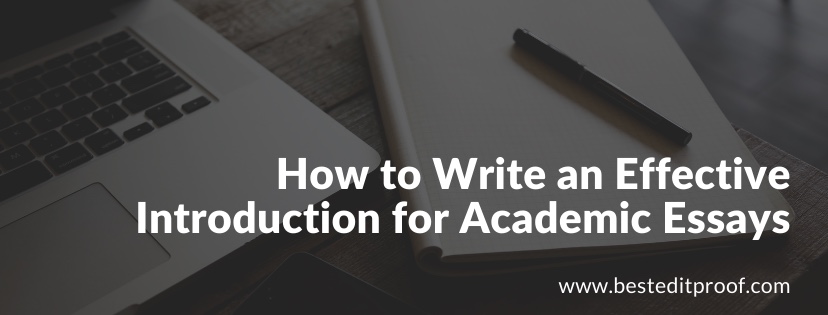There are various types of research designs that researchers can opt for. However, to opt for the right design, you first need to know the differences. Also, do not forget that the type of design depends on various variables from your research. Therefore, understanding these variables is of importance. If you are new to academic work or are just here to refresh your memory, this article has just the right content for you. Today, we will focus on the different types of research designs.

This article focuses on different types of research designs and explains how to choose the right research design for your study. To give you an opportunity to practice proofreading, we have left a few spelling, punctuation, or grammatical errors in the text. See if you can spot them! If you spot the errors correctly, you will be entitled to a 10% discount.
There are various types of research designs that researchers can opt for. However, to opt for the right design, you first need to know the differences. Also, do not to forget that the type of design depends on various variables from your research. Therefore, understanding these variables is of importance. If you are new to academic work or are just here to refresh your memory, this article has just the right content for you. Today, we will focus on the different types of research designs.
A research design is a strategy adopted by your study to answer your research question using empirical data. When you have a research design that means you are making decisions about:
Overall aim and approach of the study
Type of research design you’ll use in your study
Sampling methods and criteria for selecting study subjects
Data collection methods that will be used in your study
Procedures for data collection
Data analysis methods
As we have already mentioned, there are various types of research designs. However, each design has its own pros and cons. As for choosing the right research design for your study, you first need to determine the following questions:
What kind of questions you are asking?
What is the purpose of your research?
What resources do you have available to you?
When you have an answer to these questions, determining the right type of research design will become easier.
If we categorize research designs broadly, they could be divided into two main types — quantitative and qualitative approaches. The main difference between both is that while quantitative research depends on statistics and numbers, qualitative research depends on words and descriptions.
The quantitative research type seeks to numerically prove a theory, while qualitative research tries to understand an idea or concept. However, these two types of study/research design are barely scratching the surface.
In general, there are five main types of sub-research designs:
Experiments in academic studies are used to measure causal relationships between study variables. Researchers manipulate one or more independent variables and measure their effect on the dependent variable(s). Thus, experimental research design consists of two variables: a dependent variable and an independent variable.
The relationship between both is determined by the cause and effect between the variables. This research requires constant observation of both the dependent and independent variables, recording their reaction and to each other under various circumstances.
This type of research design is particularly useful for studying human behavior. Therefore, it is very common for experimental designs to be used in psychological and social research.
Descriptive research design is completely theory-based, where the researcher tries to describe and theorize any situation, event, concept, or idea. The phases involved in descriptive study design are as follows:
Gathering data
Analyzing data
Presenting data
Descriptive research design mainly tries to answer questions such as the why and how of any research.
Diagnostic research design is best used for understanding the rudimentary cause of an event or phenomenon. With diagnostic research design, a researcher can help understand the causes leading to a particular event. The research methodology in this design is divided into three phases:
Interception of the phenomenon
Diagnosis of the phenomenon
Solution for the situation
Correlational research design is a non-experimental study. The main purpose of correlational research design is to understand the relationship between two variables that are closely related to each other. Here, two groups of variables are involved, and no assumptions are made. Instead, statistical and analysis methods are used to understand the relationship between both variables.
The relationship between the variables can be either positive or negative and is ranged between negative 1 and positive 1 through correlation coefficient. If the values lean toward negative 1, the relationship is negative. If the values lean toward positive 1, the relationship is considered positive.
The purpose of explanatory research design is to explore the already developed ideas and theories of a researcher to further explore more concepts and ideas. This design is used for exploring unanswered questions that were not addressed earlier.
Best Edit & Proof expert editors and proofreaders focus on offering manuscripts with proper tone, content, and style of academic writing, and also provide an upscale editing and proofreading service for you. If you consider our pieces of advice, you will witness a notable increase in the chance for your research manuscript to be accepted by the publishers. We work together as an academic writing style guide by bestowing subject-area editing and proofreading around several categorized writing styles. With the group of our expert editors, you will always find us all set to help you identify the tone and style that your manuscript needs to get a nod from the publishers.
You can also avail of our assistance if you are looking for editors who can format your manuscript, or just check on the particular styles for the formatting task as per the guidelines provided to you, e.g., APA, MLA, or Chicago/Turabian styles. Best Edit & Proof editors and proofreaders provide all sorts of academic writing help, including editing and proofreading services, using our user-friendly website, and a streamlined ordering process.
Visit our order page if you want our subject-area editors or language experts to work on your manuscript to improve its tone and style and give it a perfect academic tone and style through proper editing and proofreading. The process of submitting a paper is very easy and quick. Click here to find out how it works.
Our pricing is based on the type of service you avail of here, be it editing or proofreading. We charge on the basis of the word count of your manuscript that you submit for editing and proofreading and the turnaround time it takes to get it done. If you want to get an instant price quote for your project, copy and paste your document or enter your word count into our pricing calculator.
If you need support for editing and proofreading services, contact us. You can also e-mail us or use the 24/7 live chat module to get direct support. We have a 24/7 active live chat mode to offer you direct support along with qualified editors to refine and furbish your manuscript. Alternatively, you can text us through our WhatsApp business support line.
Follow us on Twitter, LinkedIn, Facebook, Instagram, and Medium.
For more posts, click here.
How to Determine Variability in a Dataset
14.10.2023
How to Determine Central Tendency
19.02.2023
How to Specify Study Variables in Research Papers?
14.01.2023
Population vs Sample | Sampling Methods for a Dissertation
14.01.2023
How to Ensure the Quality of Academic Writing in a Thesis and Dissertation?
04.12.2022
How to Avoid Anthropomorphism in Your Dissertation?
04.11.2022
How to Write a Research Paper After Finishing a Dissertation or a Thesis
28.08.2022
How to Write a Research Methodology Section for a Dissertation and Thesis
07.08.2022
How to Write a Theoretical Framework for a Dissertation and Thesis?
05.08.2022
How to Write Literature Review for a Dissertation and Thesis
02.08.2022

After a concise overture of the concerned discipline in the introductory section of a research paper or dissertation, the literature review should begin by delineating the significance of and the most critical works in that discipline. This handout provides six easy-to-follow steps for an impeccable literature review.
Continue Reading
Academic writing is a particular type of nonfiction writing, which is used in various academic works, such as reports of university research, proposals of new theories by the researchers, or papers released by scholars analyzing the culture of their fields. This article provides nine practical tips for academic writing that a writer must remember to improve his/her writing style.
Continue Reading
Preparing a research paper is the most painstaking and challenging task for many individuals. However, with rigorous practice, it would be much hassle-free for you to sum up entirely. Are you thinking of the best ways to write an impactful research paper? We are here to help you! We present an easy-to-follow rubric that will help you draft an impeccable research paper.
Continue Reading
Writing an impactful introduction is more than just following the rules. If you search on the Internet, you may find stereotypical rules and regulations. However, it is important to understand that the author’s creative sense and ability to comprehend the topic helps in executing an effective introduction. This article discusses the major elements of writing an introduction and how you can write an impactful introduction.
Continue Reading
As a student or anyone in the academic field, you need to know about your text even before you start writing it. In academic writing, there are so many rules, regulations, styles, and guides that you need to follow. Naturally, to write a good piece of work, you need to make sure that you know about what you are writing. Similarly, it is important to know about the different types of academic writing before you get started on it. This guide discusses the various types of scholarly writing.
Continue Reading
Track changes function in Microsoft Word 2021 for macOS is a very handy tool to track your revisions, corrections, changes, edits, and even suggestions and comments while you’re reviewing a document. When an editor or proofreader wants to return a revised document to a client with his/her all revisions visibly marked, and so clients can accept or reject, or the suggested changes appear in the margins of the returned document, he/she needs Track Changes function of Microsoft Word.
Continue Reading
Some essays use logical and factual data to sustain their claims. They are known as argumentative essays and form a significant proportion of all essays written by scholars and students during their academic tenure. This article demonstrates how to write an argumentative essay by dividing the writing process into four detailed steps. Hence, readers looking to augment the plausibility of their argumentative texts should ensure to abide by them.
Continue Reading